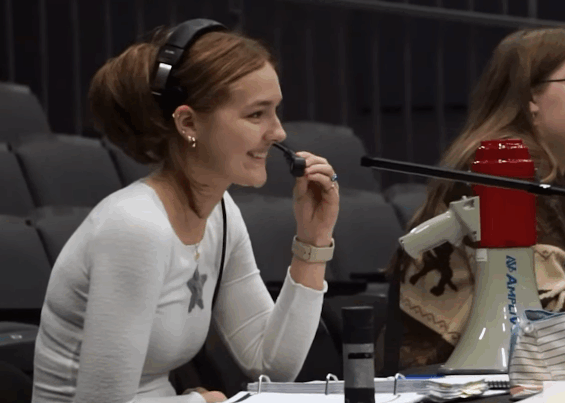Article by Griffen Jarchow
I have always loved cliff jumping. There is something special about the few seconds of weightless free-fall when, seemingly hovering, you find yourself in a limbo between being grounded and becoming engulfed in the waves below. Higher education, on the other hand, may not appreciate this experience quite the same. Granted, the cliff they face, the “demographic cliff”, holds many more unknowns in the murky waters that pool below. The demographic cliff refers to the projected enrollment decline in the number of traditional college students in the United States due to steadily decreasing birth rates since the recession in 2007. This, coupled with fewer high school graduates choosing to pursue college degrees, has only exacerbated the impending issue. Despite what many universities want to believe, with the past closing in behind and a cliff looming ahead, it seems that the world of higher education has no choice but to prepare themselves to jump.
The University of Northwestern – St. Paul is no exception to this jump. However, before we dive into the “how” we must first look at the “why”. According to the Western Interstate Commission for Higher Education (WICHE), the varying geographic regions within the United States will be affected differently by the incoming enrollment decline.
For instance, Minnesota is only expected to experience a three percent decline in the number of high school graduates from 2019 – 2037. While this may look resoundingly positive, we must not be so quick to get our hopes up. In an interview with Dr. Nathan Grawe, a professor at Carleton College who is one of the leading researchers in the field, I discovered that despite the low decline Minnesota is set to experience in high school graduates, colleges in the area will still likely feel the effects of the ever-decreasing number of traditional college age students due to the outmigration of high school students to college. Dr. Grawe stated, “Another factor relevant for higher education is the degree of outmigration from high school to college, and Minnesota is a net exporter of college students.” Essentially, Minnesota sends more of its high school graduates to colleges out-of-state than to in-state universities at a much higher rate than the national average, which states around 80 percent of high school graduates stay in-state. When one considers this fact in tandem with a declining number of 17–19-year-olds and fewer high school graduates choosing higher education, then it is possible to see why the demographic cliff poses such a large threat to many universities in Minnesota specifically, especially those with high acceptance rates since they are already admitting almost all of their applicants on a yearly basis.
Where does Northwestern fit into all of this? Let us take a look at what we know. Currently, Northwestern holds an acceptance rate of 92.5 percent and an undergraduate enrollment of 3,262 as of fall 2023. Further, Northwestern drew 2,999 of its students from Minnesota in the fall of 2019, which comes out to roughly 88 percent of its entire undergraduate student population at that time. When pooling all of these numbers together, a clearer picture begins to emerge of where Northwestern stands. The high acceptance rate of 92.5 percent may serve as a sign of caution for the university moving forward. Considering that Northwestern already admits almost all of their applicants, there could be trouble down the road if that pool of applicants begins to decrease with the number of traditional college students. However, when looking at the WICHE projection for Minnesota (minus three percent) in light of Northwestern’s undergraduate demographic in the past five years (88 percent of students from MN), we can project that Northwestern’s applicant pool may only decrease slightly as they primarily draw from high schools within Minnesota. Although, we must interpret this cautiously as society has been trending toward fewer high school graduates choosing undergraduate degrees. Northwestern’s second and third main states for undergraduate students in 2019 were Wisconsin and Iowa which hold projections of a 10 percent decline and one percent growth, respectively. Other states in the Midwest Region face projected declines ranging from 10-25 percent.
Regardless of these estimations, we must look at the “how” as Northwestern will still likely experience a shift in the coming years. In order to gain a better understanding of what this looks like, I turned to John Sommerville, who is currently the CFO of Northwestern, for some guidance. When asked about the current financial standing of Northwestern, Mr. Sommerville stated, “Many colleges are envious of our financial standing.” He further explained that they have managed to minimize debts, rearrange assets to further emphasize areas of growth, and create as much efficiency as possible in the inherently inefficient market that is higher education.
In terms of prepping for the future, Mr. Sommerville illustrated to me that Northwestern plans to emphasize academics, student experience, and faith in order to combat the projected enrollment declines. Academically, the university plans to implement a new Classical Honors College and invest more heavily in STEM oriented degrees as society shifts towards a higher number of technology-based positions. In student experience, we have already begun to see the changes being made in the new chapel system. Mr. Sommerville emphasized the importance of creating an engaging and relevant chapel experience that extends far beyond just the allotted chapel time, and I believe that we are witnessing just the beginning of this process.
“Northwestern has been around for 123 years, and we hope that people are still able to come back 123 years from now” – John Sommerville
As Northwestern prepares to dive into the future, students should be confident in Northwestern’s commitment to the future. John Sommerville painted the perfect picture in saying, “Northwestern has been around for 123 years, and we hope that people are still able to come back 123 years from now.” With the demographic cliff looming in the years to come, students can be sure that Northwestern is prepared to dive off with confidence. For the rest of the world of higher education, we can only hope that they find themselves prepared when their time to jump arrives.
References
At a Glance. (n.d.). University of Northwestern – Paul. https://www.unwsp.edu/about-us/at-a-glance/
Knocking 10th Data. (n.d.). Knocking. https://knocking.wiche.edu/data/knocking-10th-data/
University of Northwestern St. Paul Admission Requirements. (2021). Prepscholar.com. https://www.prepscholar.com/sat/s/colleges/University-of-Northwestern-St-Paul-admission-requirements




